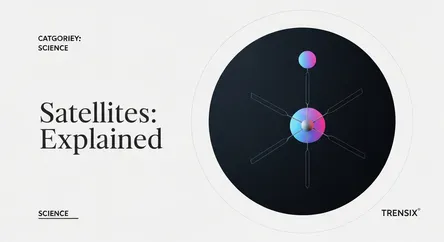Science
Satellites: Explained

Discover what satellites are, how they work, and their crucial role in modern life, from GPS navigation to global communication and climate monitoring.
What is it?
An artificial satellite is an object intentionally placed into orbit. While moons are natural satellites, the term typically refers to man-made machines orbiting Earth or another celestial body. These objects range from tiny CubeSats to the large International Space Station. They are launched into space by rockets and use the principles of orbital mechanics—a balance between their forward momentum and the planet's gravitational pull—to stay in orbit. Satellites are designed for specific tasks, such as communication, navigation, weather forecasting, scientific research, and Earth observation, carrying specialized instruments to perform their functions.
Why is it trending?
The topic of satellites is trending due to the rapid commercialization of space. Companies like SpaceX, with its Starlink constellation, are launching thousands of small satellites to create global, high-speed internet networks. This 'New Space' era is driven by innovations in reusable rockets and miniaturized satellite technology, dramatically lowering the cost of accessing space. This has led to a surge in satellite deployment for applications ranging from real-time Earth imaging to connecting remote areas, sparking both excitement for new possibilities and debates about space debris and orbital congestion.
How does it affect people?
Satellites are fundamental to modern daily life. They enable the GPS in our phones and cars, provide the backbone for global television broadcasting and international calls, and supply the data for accurate weather forecasts. They monitor climate change by tracking ice caps and sea levels, aid in disaster response by mapping affected areas, and support precision agriculture to improve crop yields. From financial transactions synchronized by satellite clocks to exploring distant planets, these orbital machines form an invisible yet indispensable layer of global infrastructure that impacts nearly every person on Earth.